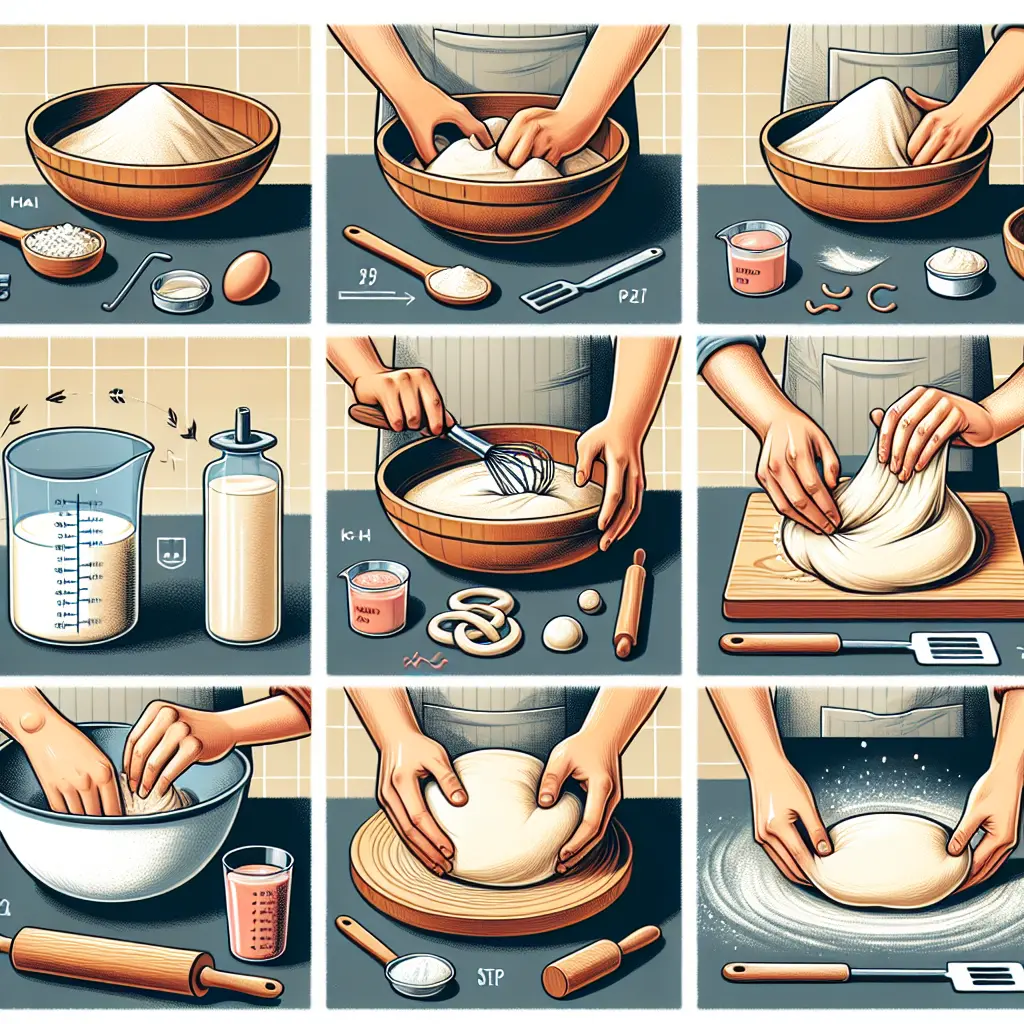
The art of crafting the perfect homemade bread dough is akin to a dance between science and soul. From the earthy aroma of freshly baked loaves to the tender crumb within, bread-making is a cherished skill that has stood the test of time. For both novices and seasoned bakers, perfecting bread dough is a journey of discovery and refinement. This comprehensive guide will delve into essential techniques that can elevate your bread-making prowess, covering everything from choosing the best flour for bread to mastering sourdough techniques.
Understanding Ingredients
Best Flour for Bread
The foundation of any great homemade bread dough is the flour. High-protein flours, such as bread flour, are ideal for yeast breads due to their strong gluten-forming potential, crucial for a good rise and chewy texture. For those looking to diversify, whole wheat flour offers nutritional benefits and a nutty flavor, although it can make the dough denser and requires adjustments in hydration (King Arthur Baking).
Yeast for Bread Making
Yeast is the leavening agent that breathes life into bread. Active dry yeast and instant yeast are popular choices, with the latter being more forgiving as it doesn't require activation in warm water before use. The freshness of your yeast can dramatically affect your bread dough rising, so ensure it's stored correctly and not past its expiry date (Red Star Yeast).
Key Techniques in Bread Making
Kneading Bread Dough
Kneading is essential as it develops gluten, which gives bread its structure. Whether using the heel of your hands or a stand mixer with a dough hook, kneading until the dough is smooth and elastic is key. For those interested in improving bread texture, this step cannot be overlooked.
Bread Dough Consistency
Achieving the right consistency is more an art than a strict recipe follow-through. The dough should be tacky but not overly sticky. Adjustments might be necessary depending on the humidity and type of flour used.
Bread Proofing Methods
Proofing allows the dough to rise and develop flavor. Traditional methods work well, but recent trends have seen bakers using their freezers to slow down the fermentation process for deeper flavors (Bon Appétit). Remember, the environment should be warm and moist; consider using a lightly oiled bowl covered with a damp cloth to achieve optimal results.
Bread Baking Tips
Preheating your oven and using a baking stone can mimic a baker’s oven, giving your loaf a better rise and crust. Steam within the first few minutes of baking will also help in achieving a shiny, crackling crust.
Specialized Bread Types
Sourdough Techniques
Sourdough bread making is both an art and a science, requiring a mature starter and an understanding of ambient conditions affecting the rise. Patience and persistence are key here, with results that are incredibly rewarding (The Sourdough School).
Whole Wheat Bread Tips
Whole wheat breads are denser due to their lower gluten content. A good tip is to mix whole wheat with bread flour to improve the rise and structure. Also, increase hydration as whole wheat absorbs more water.
Gluten Development in Bread
Gluten development is crucial and can be enhanced by autolyse; this process involves mixing flour and water and letting it rest before adding yeast and salt. This resting period helps in hydrating the flour and aids in gluten formation without additional kneading.
Innovation in Bread Making
Modern culinary explorations and gadgets have also influenced traditional bread making. The best adaptive kitchen tools have made bread making more accessible to everyone, ensuring that physical limitations do not hinder creativity in baking (Cook's Illustrated).
Incorporating Trends
While traditional recipes stand strong, contemporary twists can add excitement. For instance, adding ingredients like lavender or lemon zest can transform simple recipes into gourmet creations, much like the delicate flavors found in Lavender Lemon Sable Cookies (Food & Wine).
Conclusion
Perfecting homemade bread dough is a rewarding endeavor that combines tradition with personal expression. From selecting the right ingredients like the best flour for bread and yeast for bread making to mastering kneading techniques and proofing methods, each step brings you closer to achieving that ideal loaf. As you continue to experiment and refine your skills, remember that each loaf tells a story—a story woven from tradition, innovation, and passion.
Happy baking,
Jenna Harwood